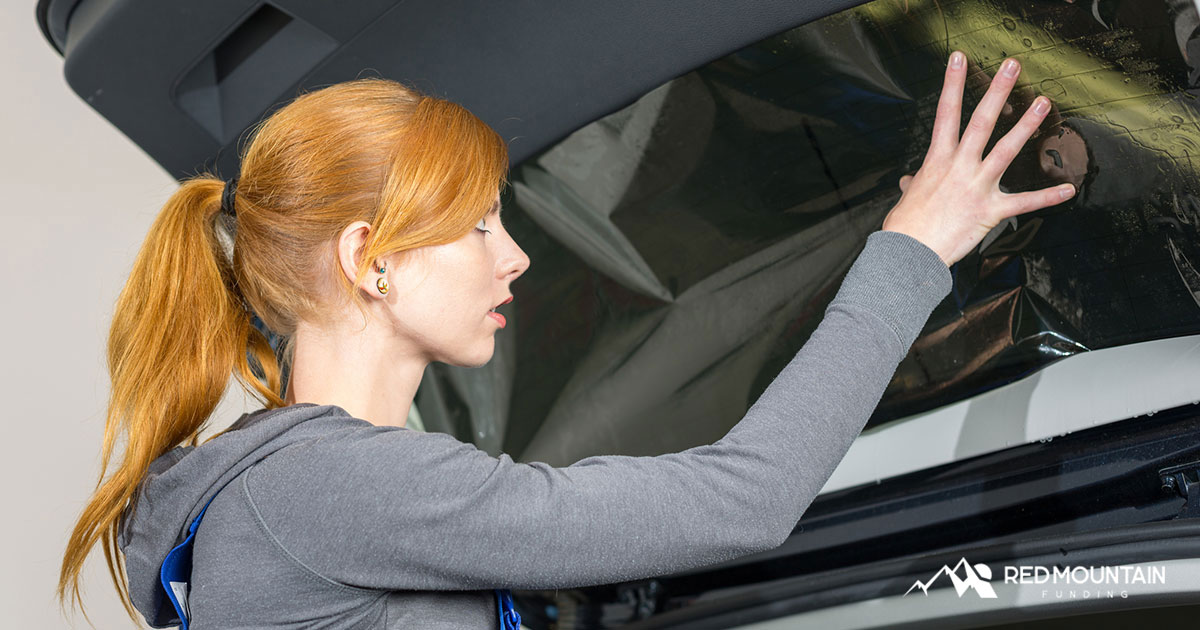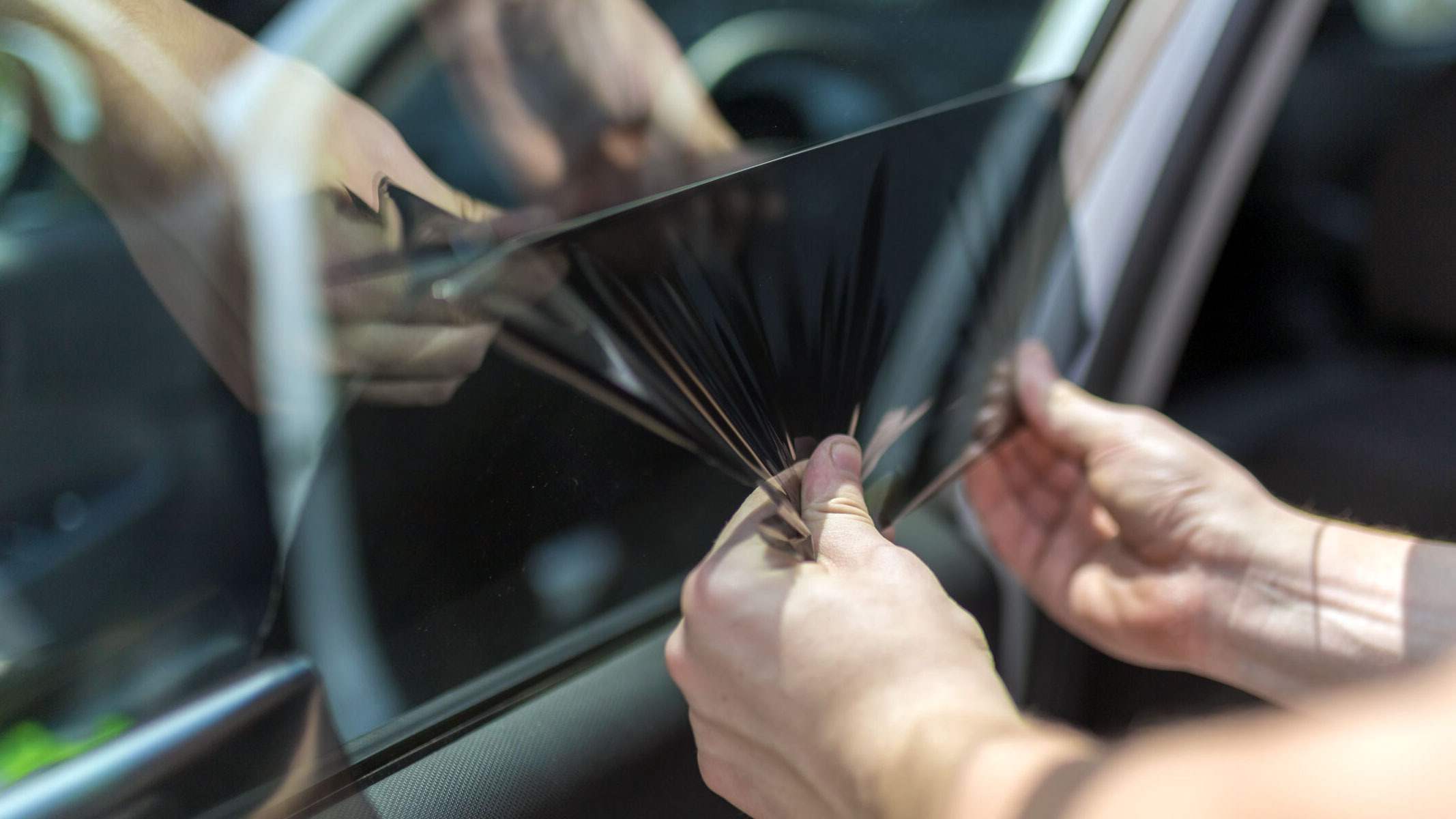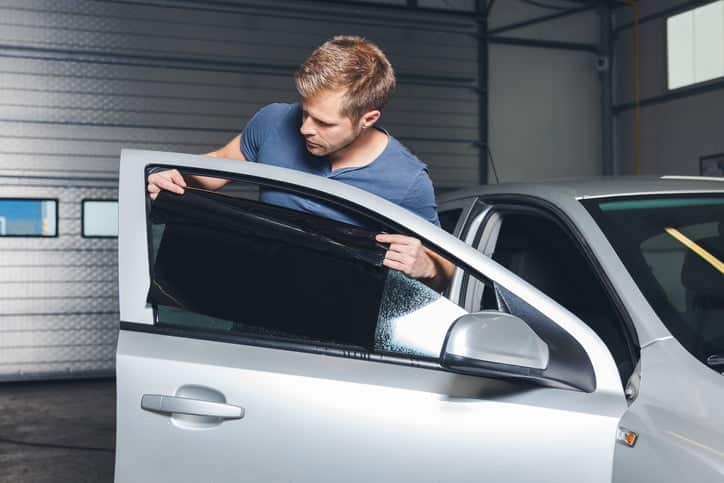A Comprehensive Guide to Understanding Auto Window Tint and Its Benefits
Auto home window tinting offers greater than simply a visual objective for lorries. It provides different kinds, each with distinctive features and benefits. Recognizing these choices, in addition to lawful regulations and maintenance pointers, is important for any car proprietor. The benefits may significantly improve driving comfort and lorry longevity. As one discovers the subtleties of home window tinting, the inquiry develops: what sort of tint is ideal fit for individual requirements?
Comprehending Car Window Tint: What It Is and How It Works
Automobile home window tint acts as a protective barrier that improves automobile visual appeals while offering practical benefits. This thin film is used to the interior surface area of vehicle windows, lowering glare and obstructing damaging ultraviolet (UV) rays from the sunlight. By filtering sunshine, auto window tint assists to regulate the indoor temperature level of the automobile, leading to increased convenience for guests and minimized dependence on air conditioning.Additionally, it protects the car's inside from fading, preserving both furniture and dashboard materials. The color can additionally boost privacy, making it harder for outsiders to see inside the automobile. In addition, specific sorts of home window color can enhance security; in the occasion of an accident, the film helps hold shattered glass with each other, minimizing the risk of injury from flying fragments. On the whole, car home window color offers both aesthetic and sensible objectives, making it a popular option amongst car owners.
Kinds of Window Tint: A Review of Options
When thinking about window color alternatives, a number of types are offered, each with unique features. Colored, metalized, and ceramic home window colors supply differing degrees of heat rejection, UV protection, and visual charm. Recognizing these distinctions can aid vehicle owners make notified choices based on their preferences and needs.
Colored Home Window Tint
Colored home window tint stands for a preferred option among vehicle proprietors seeking a inexpensive and efficient means to improve their vehicle's aesthetic appeals and personal privacy. This type of tint is developed by positioning a layer of dye between a safety covering and a sticky layer, leading to a darkened look that lowers glow and improves visual convenience. While colored home window color efficiently obstructs dangerous UV rays, it may not use the same degree of warmth being rejected as various other tint kinds. Additionally, its shade can discolor gradually, potentially lessening its effectiveness. Regardless of these disadvantages, colored home window color remains favored for its cost-effectiveness and capability to give a sleek, trendy aim to different automobile versions.
Metalized Window Tint
Metalized home window tint supplies a balance of design and functionality, making it a popular selection among cars and truck owners. This kind of color includes metal fragments within the movie, boosting both aesthetic appeal and warmth denial. The reflective high quality of metalized color helps to lower glow and enhance privacy, while likewise supplying UV protection, which safeguards the lorry's interior. Furthermore, metalized window color can enhance home window toughness, possibly avoiding ruining during accidents. It is essential to keep in mind that the metal elements can conflict with digital signals, such as General practitioner and cell phone function. Overall, metalized window color gives a reliable option for those seeking a mix of sun, longevity, and look security for their lorries.
Ceramic Home Window Tint
Ceramic home window color represents an advanced option in the range of vehicle window movies, providing distinct advantages over conventional tints. Unlike colored or metalized films, ceramic colors use sophisticated ceramic bits, which properly deny warmth and UV rays without endangering presence. This modern technology assures that lorries remain cooler, lowering dependence on a/c and boosting fuel effectiveness. In addition, ceramic window tints are much less likely to disrupt digital gadgets, such as GPS or mobile signals, making them a sensible option for modern-day cars. Their toughness and scrape resistance contribute to a longer life-span contrasted to other kinds of tints. In general, ceramic window color supplies exceptional efficiency, comfort, and security, making it a favored alternative for critical lorry owners.
Benefits of Car Home Window Tint: Beyond Aesthetics
While many individuals associate vehicle home window color with enhanced style, its advantages extend far beyond plain visual appeals. One considerable advantage is warmth reduction; window tint can block as much as 99% of unsafe UV rays, protecting and keeping the interior cooler furniture from fading. This not just boosts comfort during warm weather but also decreases reliance on air conditioning, bring about boosted gas efficiency.In enhancement, automobile home window color supplies an added layer of privacy and safety and security. Colored home windows make it hard for outsiders to see inside the lorry, which can hinder burglary and safeguard belongings. Additionally, many colors reinforce the glass, lowering the probability of shattering in case of a mishap, consequently improving safety.In addition to these functional benefits, vehicle home window tint can also add to glow decrease, improving exposure for vehicle drivers and travelers alike. This multifaceted strategy to convenience and safety and security makes window tint a beneficial investment for lorry owners.
Legal Considerations: Tinting Regulations by State
Prior to devoting to car home window tint, vehicle proprietors must navigate a complex landscape of tinting policies that differ by state. Each state has particular laws controling the acceptable levels of tint darkness and reflectivity for different home windows, including windshields, front side home windows, and rear windows. These laws usually include noticeable light transmission (VLT) portions, which determine just how much light can pass via the tinted glass.Some states allow darker tints on rear windows while restricting front side and windscreen colors for security reasons. Additionally, particular states might need a certificate from the manufacturer to validate conformity with tinting laws. Going against these laws can lead to fines, necessary removal of the color, or both. As a result, it is vital for car proprietors to research their state's laws extensively to guarantee lawful conformity before mounting window color. This persistance can save money and time in the future.
Picking the Right Tint: Elements to Think about
When picking the appropriate home window tint for a lorry, numerous critical variables enter play. Tint darkness levels, UV defense rankings, and conformity with lawful laws are vital considerations to guarantee both aesthetics and capability - Car Glass Tinting. Assessing these aspects will certainly assist people make an educated choice that fulfills their requirements and complies with regional legislations
Tint Darkness Levels
Selecting the ideal color darkness level is necessary for accomplishing the wanted equilibrium between visual appeals and performance in automobile home window tinting. Different states have varying lawful policies concerning color darkness, which can influence the option. Usually, tints are measured in percents, with reduced portions showing darker shades. Darker colors provide enhanced privacy and a streamlined appearance however can lower visibility, especially in the evening. Alternatively, lighter tints keep an even more open feeling, making certain ample exposure while still offering some warm and glow reduction. Individuals must consider their driving routines, neighborhood laws, and personal preferences when making a decision. Inevitably, the appropriate color darkness level improves the vehicle's appearance while making this page certain safety and security and conformity with lawful requirements.
UV Defense Score
Color darkness levels play a considerable role in the overall efficiency of auto window tinting, however another important variable to examine is the UV protection score of the chosen tint. This ranking shows the percentage of hazardous ultraviolet rays that the tint can block. Top quality tints usually provide 99% or more UV defense, safeguarding guests and the automobile's inside from sunlight damage. Long term direct exposure to UV rays can bring about skin troubles and fading of upholstery, making a high UV protection rating essential for wellness and long life. When selecting window color, consumers need to prioritize this ranking together with darkness degrees to ensure optimum comfort and safety while driving. Understanding these aspects help in making an informed choice when spending in automobile window tinting.
Legal Laws Compliance
Recognizing local lawful regulations is essential for anyone thinking about automobile home window tinting. Each state or region has certain laws governing the permitted degrees of tint darkness and reflectivity for various windows. These policies frequently define the visible light transmission percent, determining just how much light can go through the tinted glass. Non-compliance can lead to fines, necessary removal of the color, or problems during lorry examinations. Additionally, some areas may have limitations on using certain tinting materials, needing customers to pick products that fulfill security criteria. Subsequently, it is necessary for car proprietors to investigate their local regulations completely before picking window tint to assure conformity and avoid prospective legal complications.
Installment Refine: DIY vs. Expert Services
Just how does one determine in between a do it yourself installation and hiring expert services for automobile home window tinting? The choice frequently pivots on spending plan, experience, and preferred outcomes. A do it yourself approach can be affordable, permitting people to save on labor costs. It requires a specific level of ability and understanding about the tinting procedure. Those who are thorough and person might find success with DIY kits readily available in the market.Conversely, specialist services use knowledge and top quality materials, making sure a flawless finish. Experts commonly ensure their job, providing satisfaction versus prospective issues such as peeling or bubbling. Additionally, they recognize with local laws relating to tinting, which can be complex for the average automobile owner.Ultimately, the choice mirrors a balance between price, personal capacity, and the expected high quality of the tinting job. Each option has its benefits, and the very best selection depends on specific conditions and preferences.
Maintenance Tips: Keeping Your Color in Top Condition
Keeping the look and capability of home window tint needs routine focus and treatment, particularly in differing weather conditions. To preserve the tint, it is necessary to prevent utilizing rough cleansing products, which can scratch or damage the film. Car Glass Tinting. Instead, soft microfiber towels and gentle, ammonia-free cleaners need to be used for cleansing the colored surfaces.Furthermore, it is a good idea to wait a minimum my website of one month after installment before cleaning up the windows to allow the color to completely stick. Car parking in shaded locations or making use of sunshades can assist decrease the fading results of UV rays and prolong the color's lifespan. Normal evaluations for bubbles, peeling, or staining are advised, as early detection can promote repair services. Ultimately, staying clear of severe temperature level variations, such as pushing hot home windows in cool weather condition, will aid preserve the tint's stability and appearance in time
Frequently Asked Concerns

For How Long Does Home Window Color Usually Last on a Lorry?
Home window tint typically lasts in between 5 to 10 years, depending upon variables such as high quality, application, and ecological conditions. Regular upkeep and correct treatment can expand its life-span, ensuring ideal performance and look gradually.
Can Home Window Tinting Damages My Auto's Original Glass?
Home window tinting, when applied correctly, does not damage an auto's initial glass. Inappropriate installment or low-grade materials may lead to concerns like peeling off or gurgling, possibly affecting the glass's honesty over time.
Is Home Window Tinting Safe for All Kinds Of Automobiles?

Will Window Tinting Space My Automobile Warranty?
The question of whether home window tinting voids an automobile guarantee usually relies on the manufacturer's policies. Generally, if the color does not damage the automobile, guarantees usually stay intact. Nevertheless, getting in touch with the supplier is a good idea.

Can I Remove Home Window Tint Myself if Needed?
Eliminating window tint oneself is feasible, however it calls for careful focus to prevent harming the glass. People ought to make use of suitable devices and techniques more helpful hints to ensure a successful elimination without leaving adhesive residue or scrapes behind. While dyed window color effectively obstructs damaging UV rays, it might not provide the exact same degree of heat being rejected as various other tint kinds. Ceramic home window tint represents an advanced choice in the range of automotive window movies, supplying distinctive benefits over typical tints. Before committing to vehicle window tint, automobile proprietors need to browse a complex landscape of tinting guidelines that differ by state. These laws typically consist of visible light transmission (VLT) percents, which determine how much light can pass through the tinted glass.Some states permit darker tints on rear windows while restricting front side and windshield tints for security reasons. Tint darkness levels play a significant function in the overall effectiveness of vehicle home window tinting, but another vital element to evaluate is the UV defense ranking of the selected tint.
Comments on “The Science Behind Car Glass Tinting: How It Functions”